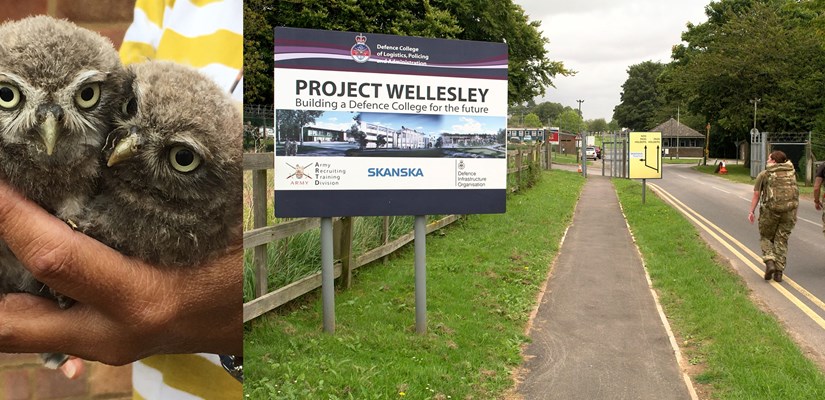
The construction team, based in Hampshire, are redeveloping the military camp for the Defence Infrastructure Organisation on behalf of the Ministry of Defence. They called in rescuers for two cute little owlets who had vacated their nest in the project office roof.
Sharon Maynard, from Skanska’s environment team, said: “Avian visitors can be discouraged from nesting on sites by taking preventative measures. But when situations like the abandoned owl chicks occur they can also be safely removed by rescue organisations, enabling us to show our compassion for wildlife.”
“Nesting birds can pose a significant risk to project timelines,” said Paul Weale, project director at Worthy Down. “Our aim is to prevent nesting issues before they happen.”
Matthew Richardson, DIO Principal Project Manager said: “DIO take this issue very seriously both in terms of ensuring the protection of nesting birds but also mitigating the risk of time delays to the project that nesting birds can have. The situation is kept under constant review with all our industry partners and project stakeholders.”
By law, all birds, eggs and nests are protected – they cannot be moved or disturbed, even on a building site. The penalties for intentionally or recklessly disturbing birds, their eggs or their nests can be severe. Offenders can face an unlimited fine, up to six months imprisonment, or both.
Measures that responsible site teams typically take on site to prevent birds from nesting on site include:
- Reviewing the construction programme against the nesting season to assess the risk throughout the year. Most birds build nests and lay eggs March-July, but some birds nest all year round.
- Covering holes in buildings with netting to prevent birds from nesting in them, particularly in cable trays and scaffolding.
- Employing alternative methods, such as bringing a flying bird of prey to site or using bird scare foil tape.